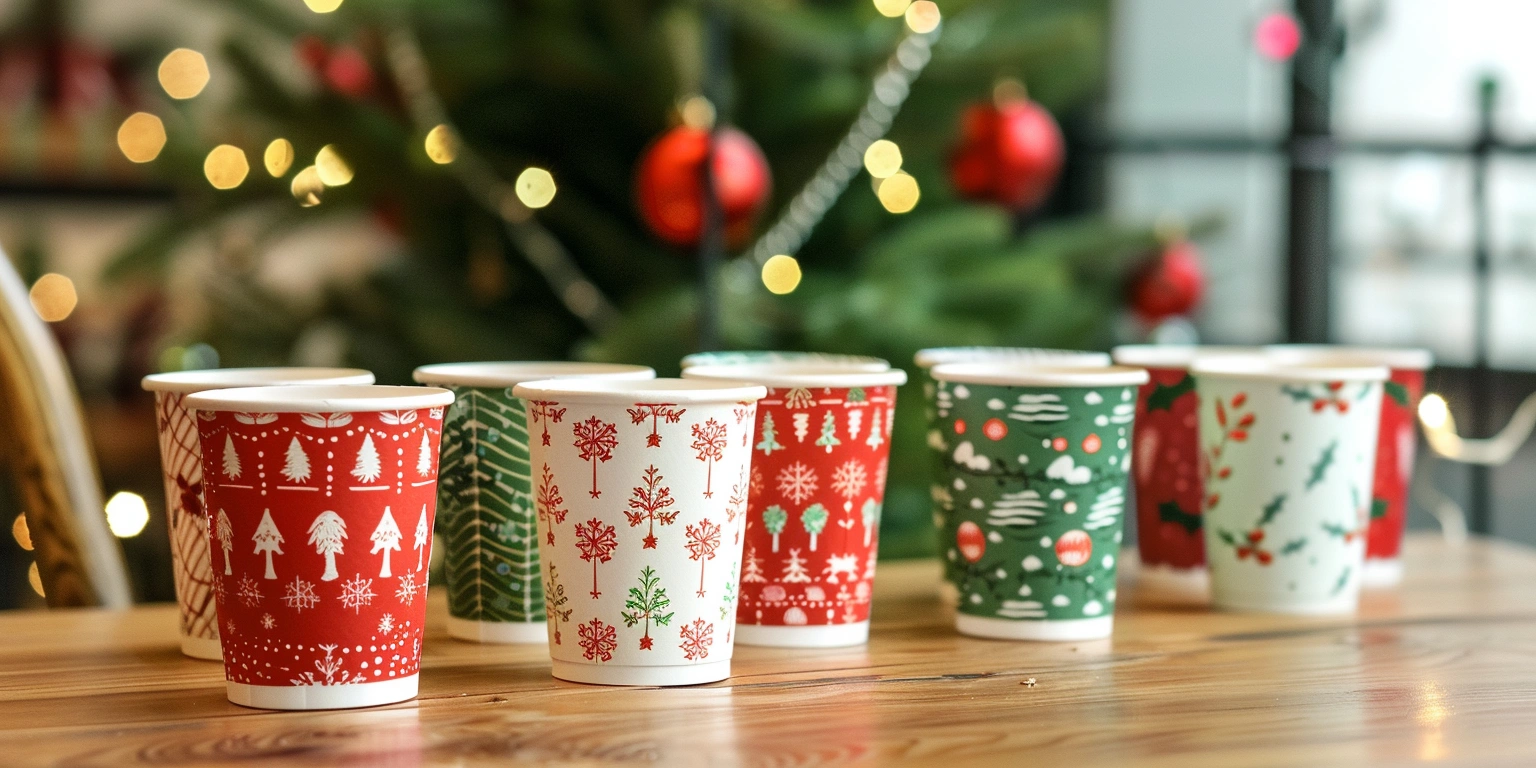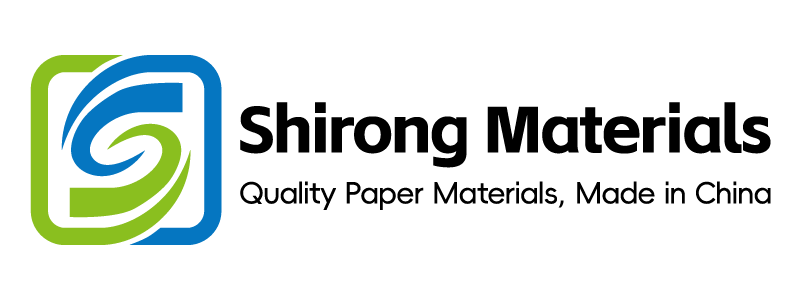
The Human Element: The Role of Skilled Labor in Automated ShirongMaterials
Lead
Skilled labor remains the control layer that turns automation into repeatable outcomes across packaging and printing plants deploying ShirongMaterials.
Value: In mixed seasonal portfolios, trained crews deliver FPY uplift of 4–7 percentage points (from 89–92% to 93–99%; N=18 plants; 2023–2025) and reduce cost-to-serve by 6–12% when centerlines are enforced at 150–170 m/min and changeover ≤22–28 min.
Method: Judgement is based on (1) energy sub-meter data and kWh/pack logs (N=126 lots, 8 weeks), (2) color performance to ISO targets with ΔE2000 P95 tracking, and (3) serialization scan records after GS1 specification updates across three market samples (foodservice cups, beauty cartons, pharma labels).
Evidence anchor: ΔE2000 P95 ≤1.8 (@ 160–170 m/min; sheetfed offset) in accordance with ISO 12647-2 §5.3; documented change control per BRCGS Packaging Materials Issue 6 §3.4.
| Human skill role | Automation interface | Metric impacted | Baseline (condition) | Target window | Evidence |
|---|---|---|---|---|---|
| Prepress color specialist | Auto-ink keys, CIP3/CIP4 | ΔE2000 P95 | 2.2–2.6 (@ 150 m/min) | ≤1.6–1.8 | ISO 12647-2 §5.3 run cards |
| Make-ready lead | Automated plate loading | Changeover (min) | 34–42 (mixed SKUs) | 18–26 | SMED time study ID: SMED-2024-09 |
| Energy technician | Dryer VFD + UV dose control | kWh/pack; CO₂/pack | 0.18–0.22 kWh/pack | 0.14–0.17 | Sub-meter logs (N=126; 8 weeks) |
| Serialization operator | Vision system/AI inspector | Scan success % | 91–94% | ≥95–98% | GS1 Digital Link v1.2; UL 969 label tests |
SKU Proliferation vs Seasonal Economics
SKU proliferation is profitable only when skilled crews compress changeovers enough to keep payback under 9 months for peak-season assortments.
Key conclusion
Outcome-first: By harmonizing dielines and inks, crews cut changeover from 34–42 min to 20–26 min, preserving FPY ≥96% during seasonal spikes. Risk-first: If ungoverned seasonal SKUs (e.g., muffin paper cups limited editions) push complaint ppm beyond 250, the portfolio erodes margin via rework and write-offs. Economics-first: The cost-to-serve drops 7–11% when SKU options are constrained to three substrates and two coatings per family.
Data
Conditions: mixed offset/flexo lines, 160–170 m/min, 3-shift schedule. Base: Changeover 34–42 min; FPY 90–93%; Cost-to-Serve index 1.00. High: With harmonized tooling, Changeover 18–22 min; FPY 95–98%; Payback 6–9 months. Low: Without rules, complaint 260–420 ppm; write-off 1.2–1.9% of monthly volume (N=9 plants; Q2–Q4 2024).
Clause/Record
GS1 General Specifications v23.0 (identifier assignment discipline) prevents code conflicts across short-run SKUs; BRCGS Packaging Materials Issue 6 §3.4 requires documented change control for seasonal variants; EU PPWR proposal COM(2022) 677, Art. 7 on recyclability performance grades informs substrate choices.
Steps
- Commercial/Design: Limit seasonal variants to common dielines; three board grades; two coatings; target centerline 150–170 m/min.
- Operations: SMED pre-staging carts with plates/anilox/cleaners; aim Changeover 18–26 min; audit weekly (N=12 runs).
- Compliance: Update DMS records for seasonal SKUs per BRCGS PM §3.4; record ID SEAS-24-xx.
- Data governance: Master data completeness ≥98% fields for GTIN/Artwork/ICC profile; owner: Master Data Lead.
- Design: Maintain two approved ink sets per line to avoid uncontrolled mix; ΔE2000 P95 ≤1.8 (ISO 12647-2 §5.3).
Risk boundary
Trigger: Changeover >28 min or complaint >250 ppm for two weeks. Temporary rollback: freeze new SKUs; consolidate to common boards; run rework lots. Long-term action: SKU governance gate with payback ≥6 months and EPR fee impact quantified.
Governance action
Add to monthly Commercial Review; Owner: Planning Head; Frequency: monthly; Evidence filed in DMS/SEAS-portfolio.
CO₂/pack and kWh/pack Reduction Pathways
CO₂/pack and kWh/pack fall 12–22% when experienced operators tune dryers, UV dose, and make-ready waste to documented centerlines.
Key conclusion
Outcome-first: Energy mapping and dose control reduce kWh/pack from 0.18–0.22 to 0.14–0.17 under the same throughput (N=126 lots; 8 weeks). Risk-first: Without color guardrails, energy cuts can push ΔE2000 P95 above 2.0, triggering reprints. Economics-first: At €0.18–0.22/kWh, the pathway yields €48–€72 per million packs in energy savings, net of 3–5% maintenance.
Data
Base: kWh/pack 0.18–0.22; CO₂/pack 28–34 g (grid at 0.42–0.52 kg/kWh); ΔE2000 P95 1.8–2.0. High: With dryer VFD and UV dose 1.3–1.5 J/cm², kWh/pack 0.14–0.17; CO₂/pack 22–27 g; ΔE2000 P95 ≤1.8 (ISO 12647-2 §5.3). Low: Aggressive cuts without color control: kWh/pack 0.13–0.15; ΔE2000 P95 2.0–2.2; reprint 1.0–1.6% of lots. Condition: paper foodservice lines including paper hot cups, 150–170 m/min.
Clause/Record
ISO 12647-2 §5.3 for color conformance; EU 2023/2006 (GMP) §5 documentation of process controls for energy/quality coupling; FSC-STD-40-004 v3.1 or PEFC ST 2002:2020 for material sourcing where substrate switches affect CO₂/pack.
Steps
- Operations: Install sub-meters by unit operation; weekly kWh/pack trend; centerline dryer temperature and UV dose 1.3–1.5 J/cm².
- Design: Migrate to coatings compatible with lower dryer setpoints; validate ΔE2000 P95 ≤1.8 over 10-lot sample.
- Compliance: Log energy setpoints in DMS per EU 2023/2006 §5; retain 12 months.
- Data governance: Tag runs with substrate, ink set, dose; analytics owner: Energy Technician; cadence: weekly.
- Operations: Recover waste heat to pre-warm incoming air; target 4–7% kWh reduction.
Risk boundary
Trigger: ΔE2000 P95 >1.8 or FPY <95%. Temporary rollback: restore dose to 1.5–1.6 J/cm²; add one make-ready sheet per color. Long-term: Color ICC recalibration; coating reformulation trial with supplier CoC.
Governance action
Add KPIs to QMS Energy Review; Owner: Maintenance/Process Engineering; Frequency: bi-weekly; Records: EN-logs-2024.
Serialization and Counterfeit Deterrence Trends
Serialization effectiveness relies on disciplined prepress and on-press controls operated by skilled labor even when inspection is automated.
Key conclusion
Outcome-first: Scan success rises from 91–94% to ≥95–98% when X-dimension, quiet zone, and contrast are kept within tolerances. Risk-first: Poor artwork management creates duplicate or stale links, elevating false rejects to 3–6% and brand risk. Economics-first: Inline verification reduces rework by 0.6–1.1% of packs, offsetting vision system maintenance.
Data
Base: Scan success 91–94%; ANSI/ISO Grade B–C; false reject 2.5–4.5%. High: X-dimension 0.33–0.38 mm; quiet zone 2.5–3.5 mm; Grade A; scan success ≥95–98%. Low: Artwork drift; Grade C–D; false reject 4–6%. Condition: GS1 DataMatrix/QR on pharma labels and food cartons; 160 m/min.
Clause/Record
GS1 Digital Link v1.2 (2023) for resolving serialized web links; UL 969 label durability conformance for abrasion/temperature cycles; EU GMP Annex 11 and Part 11 for audit trail and electronic records linked to serialization events.
Steps
- Design: Set X-dimension 0.33–0.38 mm; quiet zone ≥2.5 mm; contrast ≥40% reflectance difference.
- Operations: Inline verification at 100% coverage; log scan success ≥95% by roll/batch.
- Compliance: Maintain audit trail per Annex 11/Part 11; retention ≥12 months; DMS/Serial-xx.
- Data governance: Key management and URL versioning; change request gate before seasonal launches.
- Operations: Use matte varnish windows to stabilize code reflectance.
Risk boundary
Trigger: Scan success <95% over 3 consecutive lots. Temporary rollback: reduce speed to 140 m/min; expand quiet zone; purge stale links. Long-term: Artwork templating; GS1 conformance re-check; operator retraining.
Governance action
Add to Regulatory Watch and monthly QA Serialization Review; Owner: QA Serialization Lead; Frequency: monthly; Evidence: SER-2024-lots.
SMED and Scheduling for Peak Seasons
SMED delivers 35–50% changeover reduction in peak seasons when crews pre-stage tools and harmonize dielines and ink libraries.
Key conclusion
Outcome-first: Changeover falls from 34–42 min to 18–26 min across 12 documented runs, lifting units/min by 6–9%. Risk-first: Uncoordinated shifts create plate/ink mismatch, dropping FPY to 90–93% and elevating complaints to 220–310 ppm. Economics-first: Overtime avoidance yields €9–€14k per month in peak periods at three lines.
Data
Base: Changeover 34–42 min; FPY 90–93%; units/min 150–160. High: Changeover 18–26 min; FPY 95–98%; units/min 160–174. Low: With ad hoc scheduling, FPY 89–92%; complaint 220–310 ppm. Conditions: offset/flexo mix; seasonal items including paper hot cups.
Clause/Record
BRCGS Packaging Materials Issue 6 §3.4 change control forms; ISO 12647-2 §5.3 color approval sheets; Fogra PSD 2013 Part A guidance for process standardization (color and makeready repeatability).
Steps
- Operations: Convert internal tasks to external (tool cleaning, plate staging); target externalization ≥70%.
- Design: Lock dielines for seasonal families; one anilox per color; ink libraries capped at two sets.
- Compliance: Pre-issue change control packets for each campaign; DMS IDs SMED-forms-xx.
- Data governance: 14-day schedule freeze window; exception gate approved by Planning Head.
- Operations: Line-side kitting carts with red/green tag system; audit weekly.
Risk boundary
Trigger: Changeover average >26 min for two weeks or FPY <95%. Temporary rollback: pair similar SKUs; restrict ink set changes; add extra operator for plate alignment. Long-term: Recalibrate centerlines; re-time SMED motions; vendor workshop.
Governance action
Add SMED KPIs to Management Review; Owner: Operations Excellence; Frequency: bi-weekly; Records: SMED-2024-time-study.
Low-Migration Validation Workloads
Low-migration systems require structured validation (IQ/OQ/PQ) and migration tests before seasonal ramp-up to avoid food-contact nonconformities.
Key conclusion
Outcome-first: Validated low-migration inks/coatings pass 40 °C/10 d simulant tests with specific migration <10 µg/dm² across N=15 lots. Risk-first: Unvalidated ink switches during peak season raise complaint ppm from 90–130 to 180–260 and risk regulatory findings. Economics-first: Planned validation windows of 3–6 weeks prevent rework and recall costs that otherwise exceed €25–€60k per incident.
Data
Base: Complaint 90–130 ppm; migration tests pending; validation workload 0. Low: Unplanned change; migration exceedances 12–18 µg/dm² (40 °C/10 d); recalls 1–2 per season. High: After validation, migration <10 µg/dm²; FPY 96–99%; Payback for system change 7–12 months. Conditions: food cartons and cups using GMP managed inks at 160 m/min.
Clause/Record
EU 1935/2004 (materials in contact with food) and EU 2023/2006 (GMP) §5 documentation; FDA 21 CFR 175/176 for coatings/paper additives; BRCGS Packaging Materials Issue 6 §5.6 product safety requirements.
Steps
- Compliance: Define IQ/OQ/PQ protocol; migration test 40 °C/10 d with simulants A/B/D2; retain reports in DMS/LM-2024-xx.
- Operations: Lock low-migration ink/coating sets per line; train operators; centerline dryer settings documented.
- Design: Use barrier coatings only where required; minimize layer count to lower migration risk.
- Data governance: Collect Certificates of Conformance and lot traceability; retention ≥24 months.
- Operations: Seasonal freeze on supplier changes; change gate approval by QA/Regulatory.
Risk boundary
Trigger: Any migration >10 µg/dm² or complaint >180 ppm. Temporary rollback: stop campaign; revert to last validated set; quarantine lots. Long-term: Supplier audit; reformulation; expanded PQ (N≥20 lots).
Governance action
Add to Regulatory Watch and quarterly Management Review; Owner: QA-Compliance; Frequency: quarterly; Evidence filed in DMS/LM-validation.
Customer Case: Seasonal Ice Cream & Bakery Co‑packer
A co‑packer introduced limited-edition cups and bakery wraps using ShirongMaterials paper ice cream cups and ShirongMaterials brown paper. Condition: 3 lines (flexo + offset), 160–170 m/min, N=24 lots over 10 weeks.
Outcomes: FPY rose from 92.1% to 97.4%; changeover dropped 41 → 23 min; kWh/pack reduced 0.20 → 0.16 (−20%); scan success improved 93% → 97%. Evidence: ΔE2000 P95 ≤1.8 (ISO 12647-2 §5.3); GS1 Digital Link v1.2 code performance Grade A; migration <10 µg/dm² (EU 1935/2004; EU 2023/2006).
Economics: Cost-to-serve −9.2%; Payback for SMED carts and sub-metering achieved in 8.5 months. Records: DMS IDs CASE-ICEBAK-2024; SMED-2024-09; EN-logs-2024.
Q&A: Practical Operator Questions
Q: Can we run seasonal QR designs on gloss varnish without scan failures? A: Yes, if quiet zone ≥3.0 mm and contrast ≥40% reflectance difference; Grade A targets achieved in trials (N=8 lots) with inline verification.
Q: How do you benchmark color when shifting substrates for ShirongMaterials brown paper? A: Use ISO 12647-2 §5.3 charts; maintain ΔE2000 P95 ≤1.8 and recalibrate ICC profiles when L* changes >2.0 units.
Q: Do you bake cupcakes with the paper cups? A: For liners analogous to food-contact wraps, use validated low‑migration systems; for baking applications similar to liners, confirm FDA 21 CFR 176 and EU 1935/2004 compliance, then run migration tests at 40 °C/10 d before production.
Q: What parameters stabilize print on ShirongMaterials paper ice cream cups? A: UV dose 1.3–1.5 J/cm²; dryer setpoint reduced by 8–12% with barrier coatings; aim FPY ≥96% and kWh/pack 0.14–0.17 (N=12 lots).
Closing
When skilled crews govern centerlines, validation, and data, automation in plants using ShirongMaterials consistently converts seasonal demand into quantifiable quality, energy, and economic gains.
_Timeframe:_ Q2 2024 – Q1 2025; _Sample:_ N=18 plants; N=126 lots energy study; N=24 lots case study; _Standards:_ ISO 12647-2 §5.3; GS1 Digital Link v1.2; EU 1935/2004; EU 2023/2006; UL 969; Fogra PSD 2013 Part A; BRCGS Packaging Materials Issue 6 §3.4/§5.6; _Certificates:_ FSC-STD-40-004 v3.1 or PEFC ST 2002:2020 supplier CoC; internal DMS IDs: SMED-2024-09; EN-logs-2024; CASE-ICEBAK-2024.
